There, There: others
For optimal experience, we recommend to view this publication on a horizontal screen.
Acts of care
In her text “Women of Algiers in Their Apartment”, the Algerian author Assia Djebar suggests that we should refrain from speaking 'for' or - even worse - 'about' women, but rather be close to them, and if possible, very close to them. Following Assia Djebar’s words, Hassina Taalbi brings together different female* voices and practices of knowledge production.
This contribution is a re-compilation of works by Taalbi, which were assembled in March 2022 in the exhibition “dicht neben Ihnen”. The project marked the inception of the nomadic series revisionen, which traces various paths, inviting artists to share both new and old legends, narrate stories of role models, and explore (female*) visions of the world.
Functioning as a vision for the future and a revision of past representations of voices like the writer Assia Djebar, the singer Cheikha Rimitti, or the athlete Hassiba Boulmerka, the exhibition and this essay are bridges to visualize Hassina Taalbi's way of collecting, archiving and creating. Both are manifestations of the overarching power of the position that emerges from being “very close to them”. By focussing on this multifaceted, collaborative way of collecting, Hassina Taalbi’s practice is examined from a feminist perspective, in order to recognize its subversive and emancipatory potential. It acknowledges the act of care that arises from this common and the suggestion to stay close to each other
Centrifugeuse
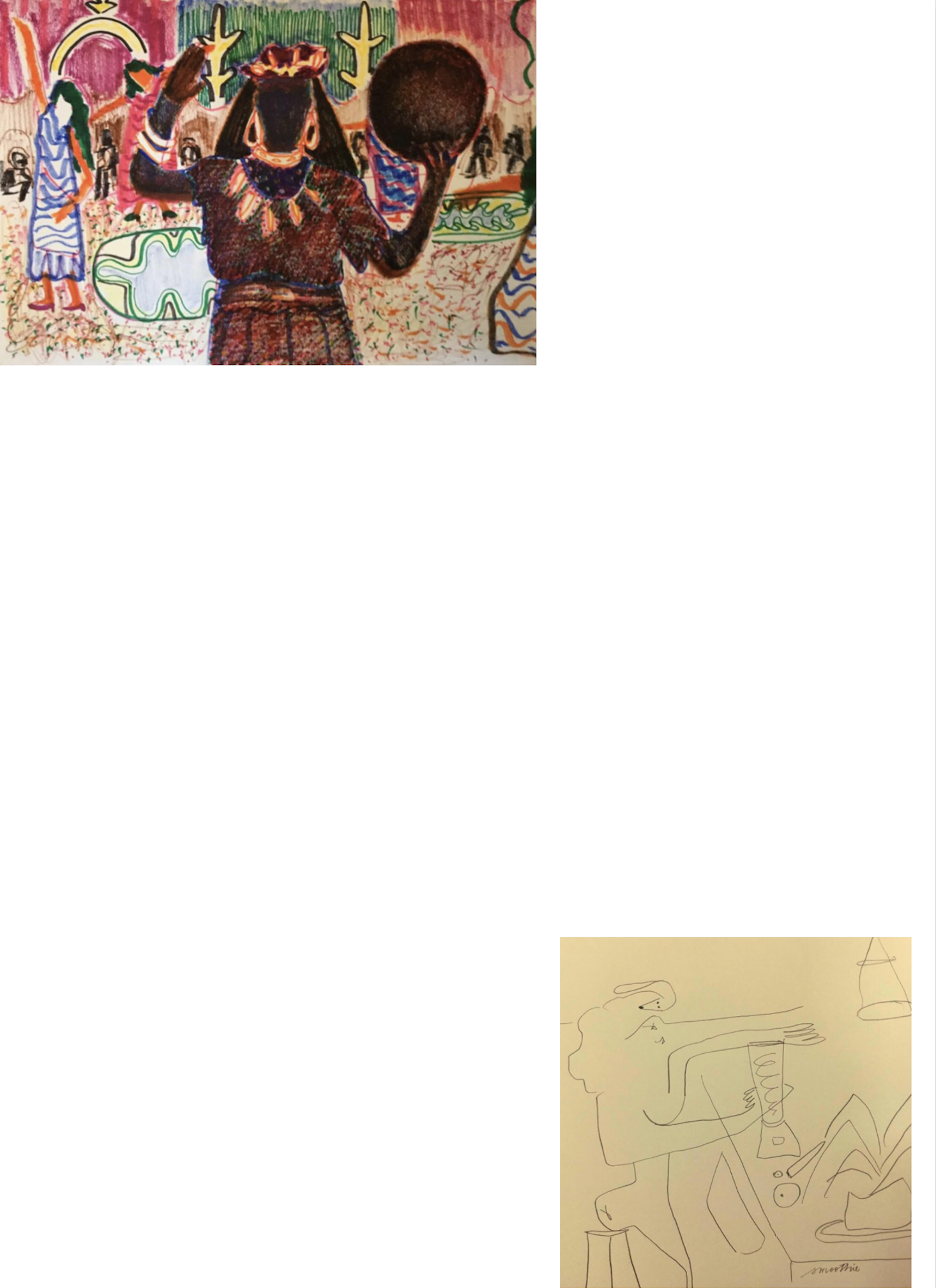
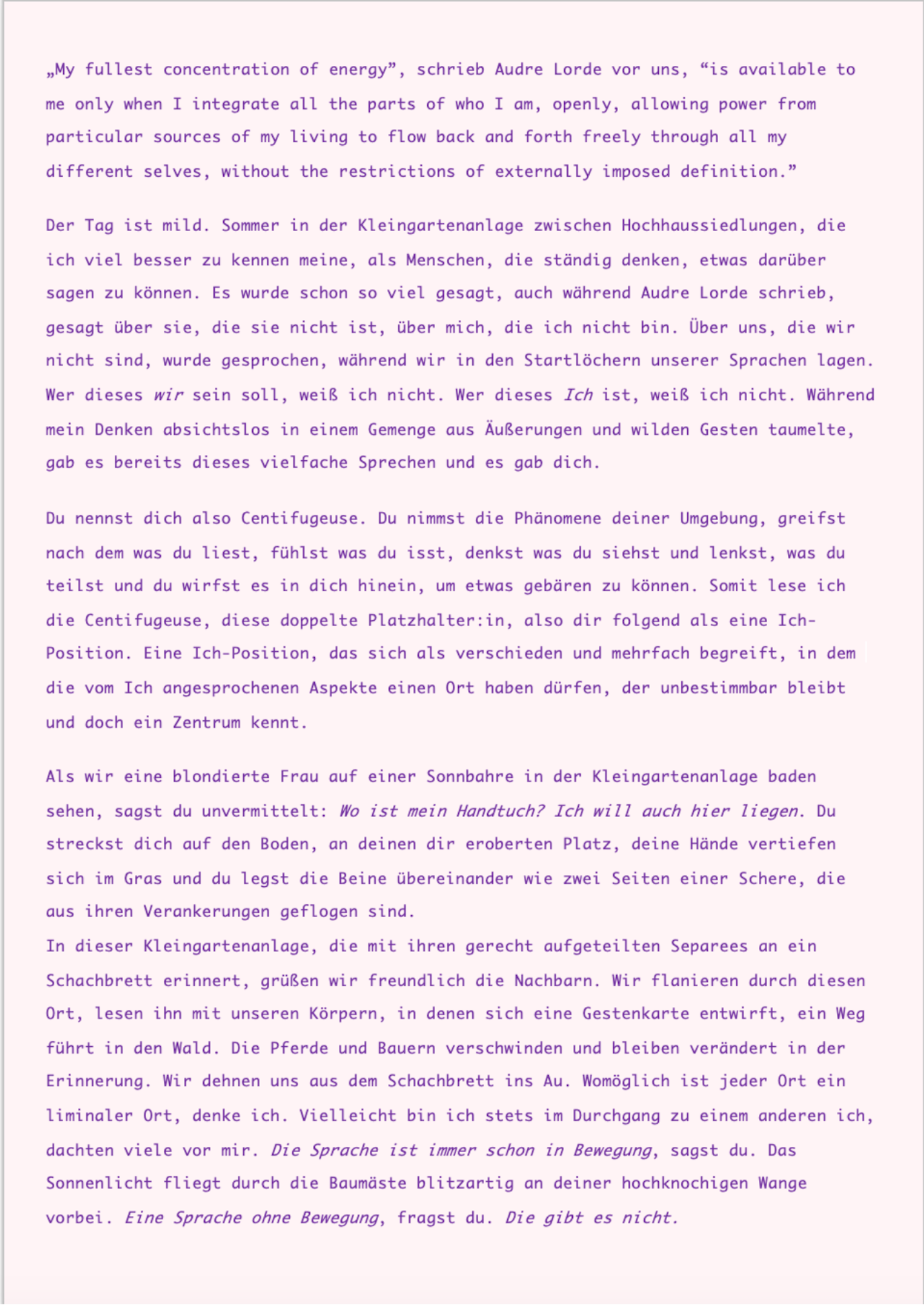
On a humorous note, Taalbi describes herself as a “Centrifugeuse” - a juice extractor who, in her way of working, blends in music, film, sports, and inspiration from various kinds. In her works, the contours of these points of references become blurred and fluid in new compositions that reveal a very own sensual language of visions of the world. In addition, her work inspires dialogues like the one with writer Anna Kuecking: Hassina Taalbi herself becomes the source of inspiration and is once again being enriched by further voices.
Imzad
In "Imzad," Hassina Taalbi directs our attention to the gestures of a dancing body. Taking a closer look, symbols appear from below. The title refers to a tradition that has been recognized as intangible UNESCO World Heritage since 2014. The Imzad is a one-stringed instrument traditionally played exclusively by women in the Maghreb region. The practice of playing the instrument is intertwined with an ancient tradition of women passing on stories and myths. In this oral tradition, the woman and her body emerge as central figures in a dynamic transmission of knowledge. The drawing of the dancer and the gaze upon her transmits the subjectivity and situatedness that underlie this practice. The singularity of bodily movement and oral history conveys the agency genuine to this female* transfer of knowledge.
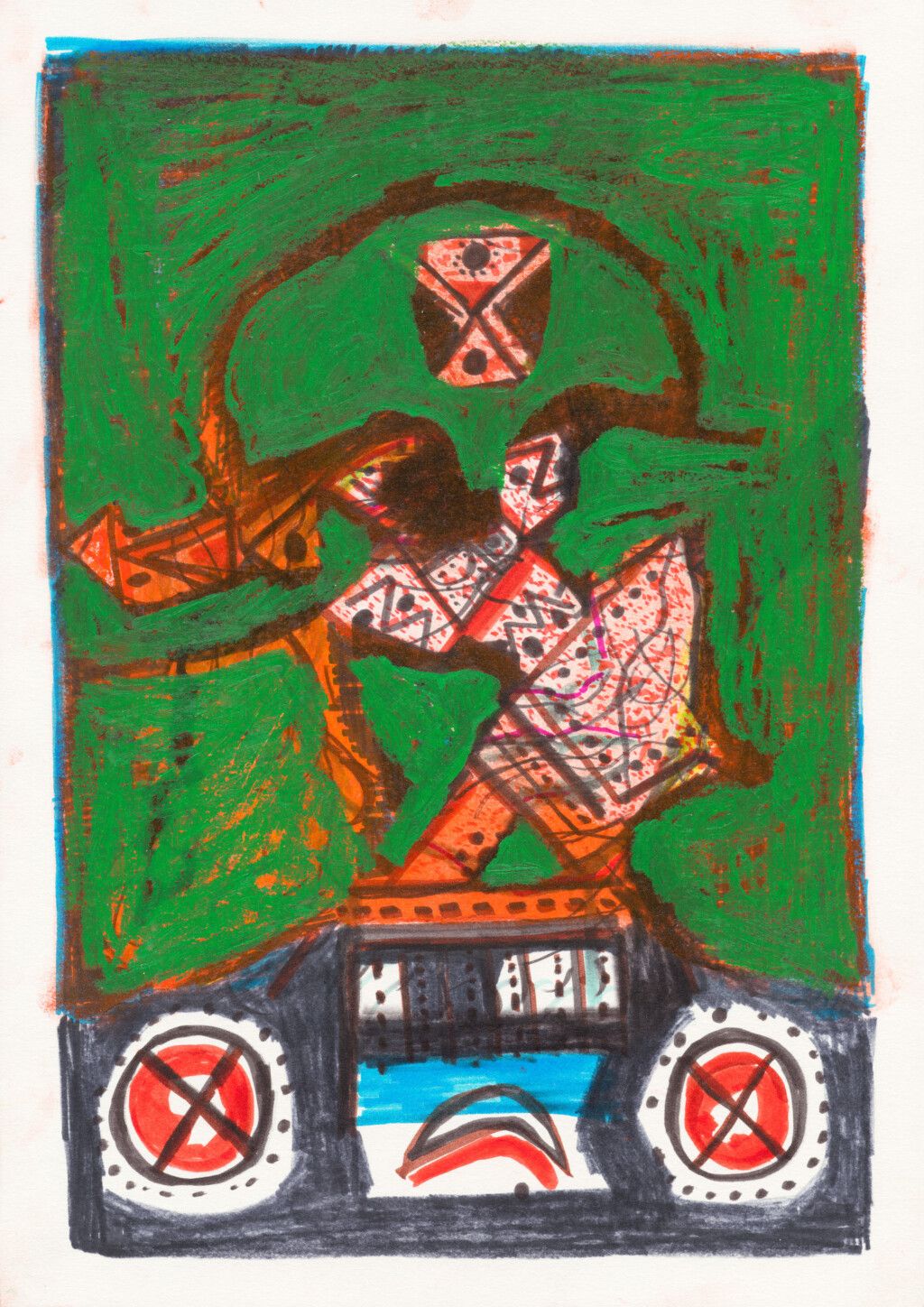
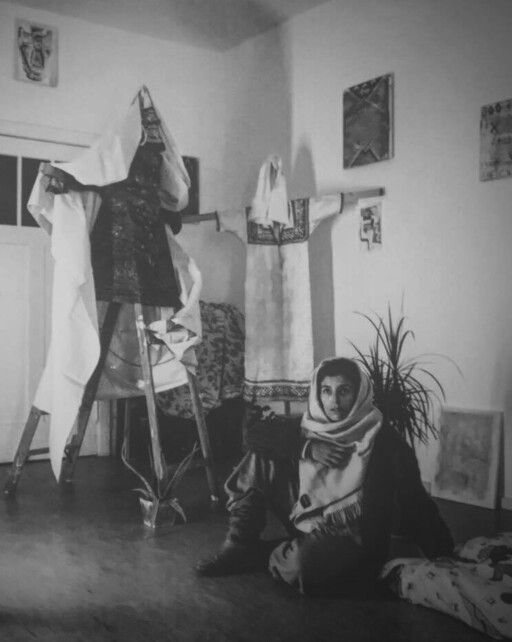
Photograph of Hassina Taalbi, image courtesy of the artist
Caption: Imzad, 2022, oil pastel and markers on paper
Hassiba Boulmerka
In another series of works Hassina Taalbi follows traces of Hassiba Boulmerka’s success story. Boulmerka won gold for her 1500m run in the Olympic games of 1992, both as the first Algerian athlete and as the first African Woman in history. From figurative to more deconstructed depictions, five paintings underscore the recurring movements of her body. The silhouette, reduced to single paint strokes, directs attention to the essence: the strength, the political strength, with which this person's movement can be associated. During the 1990s, amid her successes, Boulmerka repeatedly made use of her public visibility to raise her voice for women's rights. Despite being hailed as a heroine by feminist movements, her appearances in short sportswear subjected her to intense hostility from extremists.
Hassina Taalbi’s explicit depictions capture a way of assuring herself of the inherent agency that Boulmerka embodies in her times: the hope and faith to achieve the yet impossible, always being conscious about the struggle of other women.
Hassina Taalbi, Resources, 2021, oil on canvas Hassina Taalbi, Legend, 2020, oil on canvas, Photo © Gregory Copitet Hassina Taalbi, Arrival, 2020, oil on canvas, Photo © Gregory Copitet Hassina Taalbi, Spielplatz, 2021, oil on canvas Hassina Taalbi, Legacy, 2020, oil on canvas, Photo © Gregory Copitet Photograph of Hassina Taalbi, image courtesy of the artist
The self
The artistic exploration of the self in Hassina Taalbis's oeuvre unveils numerous facets, oscillating between deliberate staging and deconstruction. In certain instances, it abstracts into untamed forms, while in others, a play with roles and points of reference becomes discernible.
For example, in "Olympiassina," the naked figure looks directly at the viewer from behind a semi-transparent curtain of paint. Both title and theme allude to Manet’s Olympia, which itself is a reference to numerous female* nudes depicted by male painters. Olympiassina’s self-reflexive gaze embodies a female* perspective, a vision. Recognizing that Taalbi decides how to paint herself – as a woman, as a painter – the self-portrait becomes a powerful gesture. Its appropriation of stories and bodies reveals associated spaces of possibility not only for representation but also for positioning oneself.
The force of this play with roles is underlined by more subtle representations. References to club culture but also certain states of mind deconstruct the self to allusions of surroundings and situations and become less permanent. Visually deconstructed or noncontinuous they reveal more situated and emotional states of being and provide glimpses towards an inner life and its vulnerability.
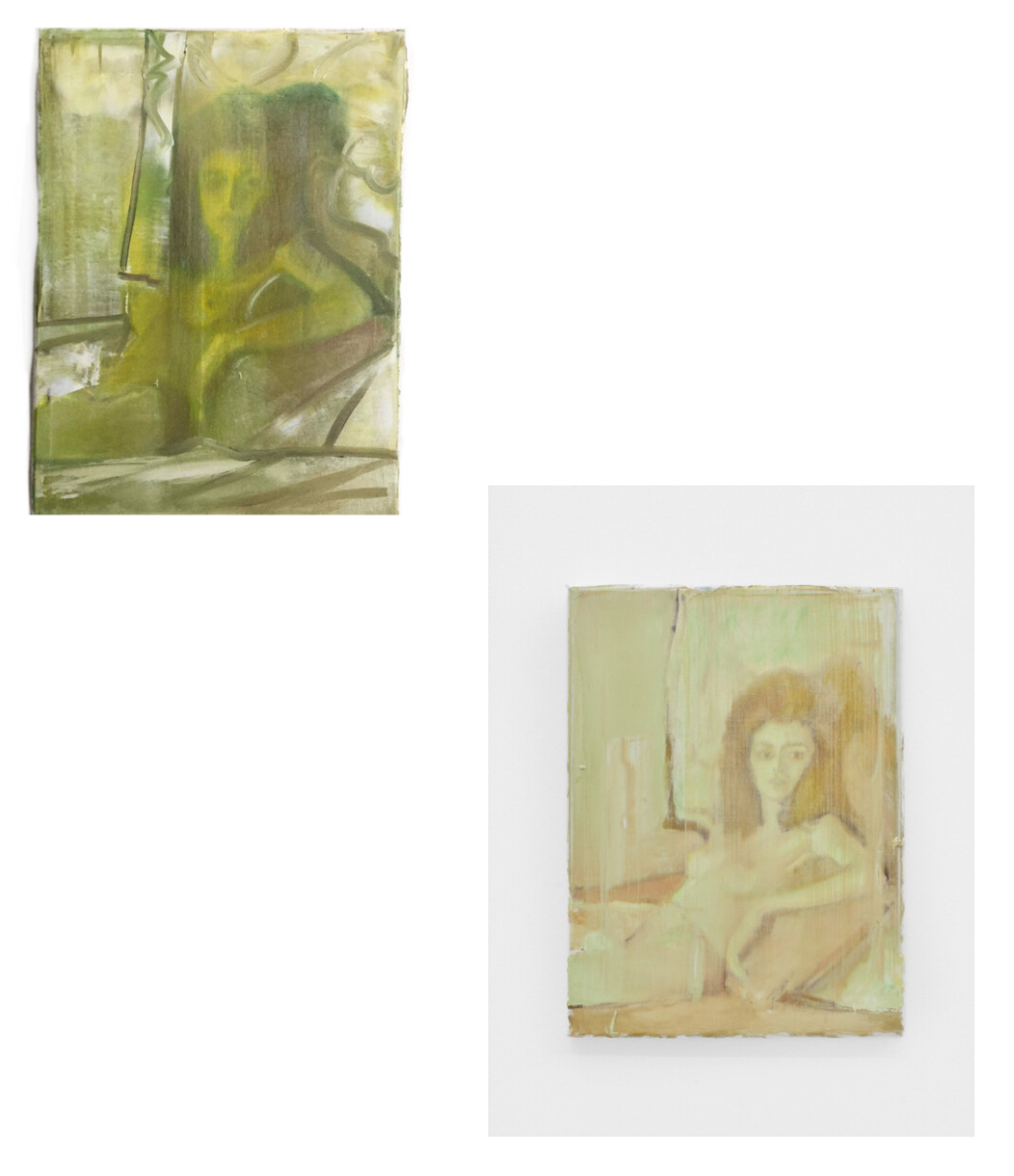
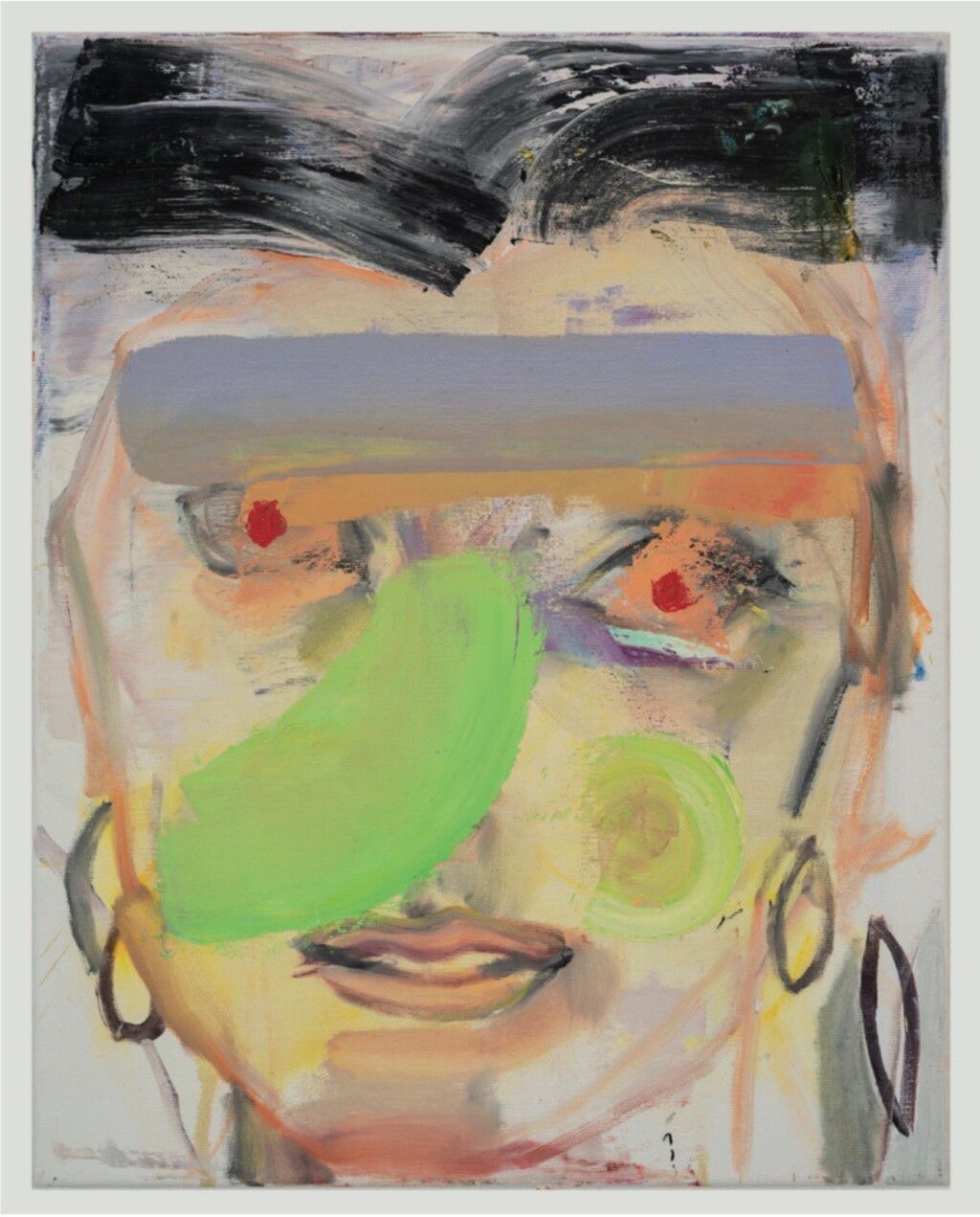
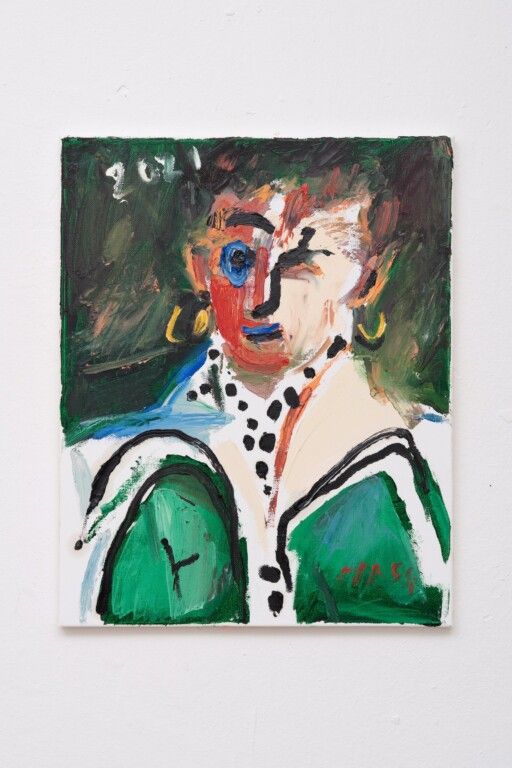
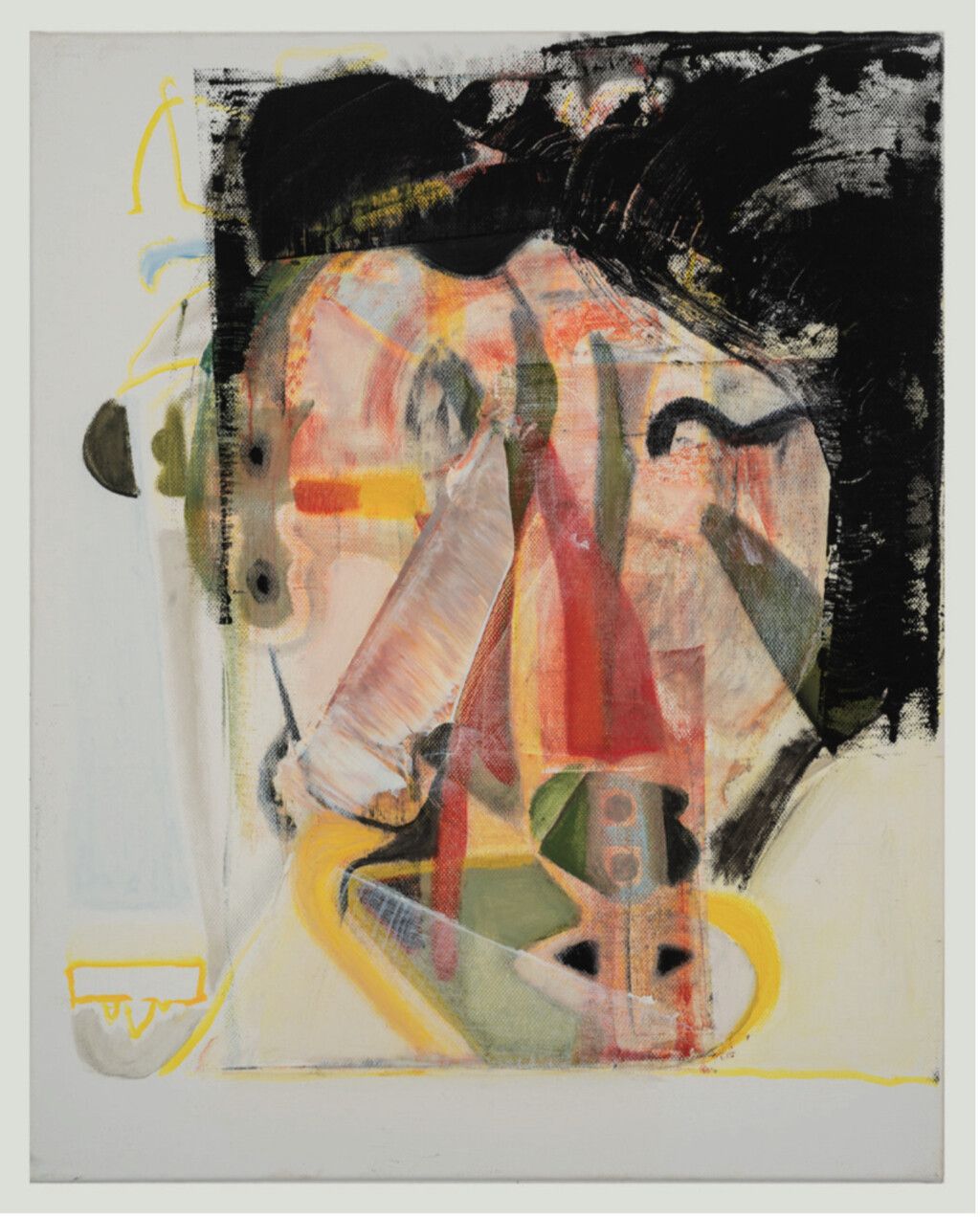
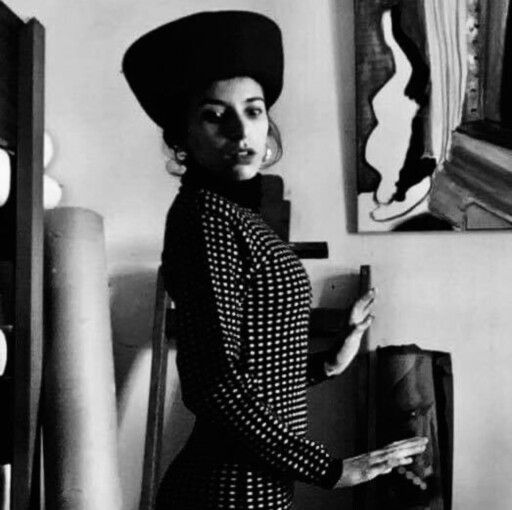
Hassina Taalbi, Olympiassina 1, 2018, oil on canvas Hassina Taalbi, Olympiassina 2, 2019, oil on canvas Hassina Taalbi, Fieber, 2018, oil on canvas Hassina Taalbi, Künstlerin als Sportlerin, 2021, oil on canvas Hassina Taalbi, Johnny Knüppel, 2017, oil on canvas Photograph of Hassina Taalbi, image courtesy of the artist
Visions
Taalbi introduces us to her multiverse, gently guiding through her observations and visions of her surroundings and self. She draws inspiration from various sources—from sports role models like Hassiba Boulmerka to ancient female* cultural practices that transmit myths and knowledge like the Imzad. The works invite us to immerse ourselves in practices of female* resistance and emancipation. Despite the individual struggles of the represented figures, the paintings exude a specific optimism, focusing on collective rituals and the importance of mutual support by staying very close to each other. The collection in its whole blurs the line between a personal archive and a more political vision of a female* solidarity. Once collected and assembled between times and places, their shared visibility creates a relational space which in itself functions as a support network. This polyphonic femininity creates a hopeful vision for the future.
Hassina Taalbi lives and works between Paris and Berlin. While she studied at the ESBA in Nantes from 2008-2012, Taalbi also attended the class of Heribert C. Ottersbach at the HGB Leipzig in 2010-2011. Her work has been presented in group exhibitions like “Do I dare to eat a peach” at Fiebach Minninger in Cologne, “FUTUR 1” at Galerie Jean Claude Maier in Frankfurt/Main, “Nichts als Schönheit” #5 at Eigen Art Lab in Berlin and “Reclaim your Brain” at C. Rockefeller in Dresden.
Instagram: @hassina_taalbi
The work “Imzad” is available as a limited edition of 15 (Offset print, 29,7cm x 42cm). For more info please contact Hassina Taalbi hassina.taalbi.b@gmail.com.
Luise Willer
Luise is a producer and art historian whose work revolves around socially oriented artistic practices, particularly their performative moments and organizational forms.
Sabrina Herrmann
Sabrina is a researcher with an interest in the intersection of human rights, arts and gender.